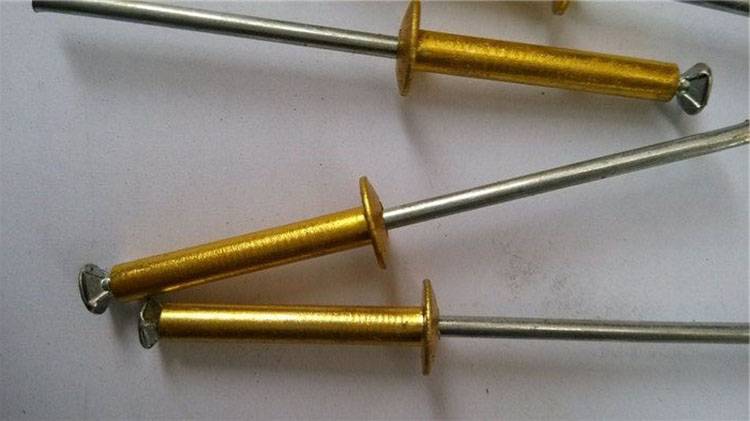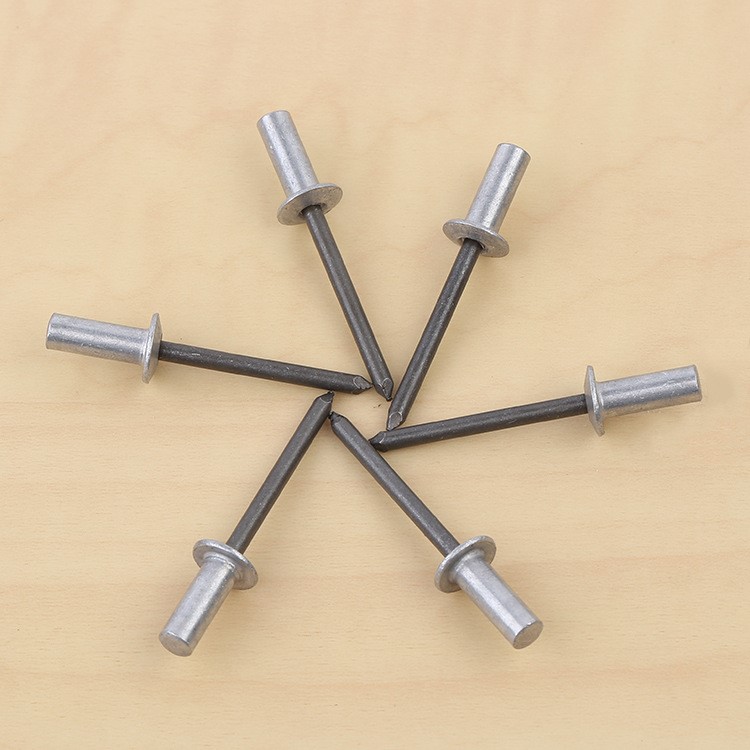The meaning of pulling rivet is:
A riveting method that uses manual or compressed air as power and uses special tools to deform special rivets and rivet the riveted parts together, belonging to a type of cold riveting. The main materials and tools used for riveting are pop rivets and pneumatic (or manual) riveting guns. The main process of rivet pulling operation is: first, select the aperture of the rivet gun head based on the diameter of the rivet core rod, adjust the position of the guide pipe, lock it with a nut, and then insert the rivet into the rivet hole, cover the rivet gun, clamp the rivet core rod, the gun end against the rivet head, start the rivet gun, and rely on the backward tension generated by compressed air to create pressure on the rivet, compress and deform the rivet head, and at the same time, The core rod was pulled out due to a fracture at the necking point, and riveting was completed. The characteristic of pull riveting is that it does not require top nail operation, which is very convenient for components that cannot be top nailed on the reverse side and have complex structures. However, because the rivets are made of aluminum, they are only used for light load situations.
The working principle of pulling rivets is:
Unlike traditional bolts that use torque rotation to generate tightening force, rivet fasteners use the principle of Hooke’s Law. Under the action of unidirectional tension, the bolt rod is stretched and the collar is pushed, squeezing the smooth collar into the screw groove to form a 100% bond between the collar and the bolt, generating permanent tightening force.
Working method:
1. Place the locked hole component on one side of the rivet, insert the rivet core into the gun head of the riveting gun, and the gun head should be tightly pressed against the end face of the rivet.
2. Perform the riveting operation until the opposite side of the rivet expands and the rivet core is pulled apart.
3. The riveting is completed.
Post time: Sep-06-2023



